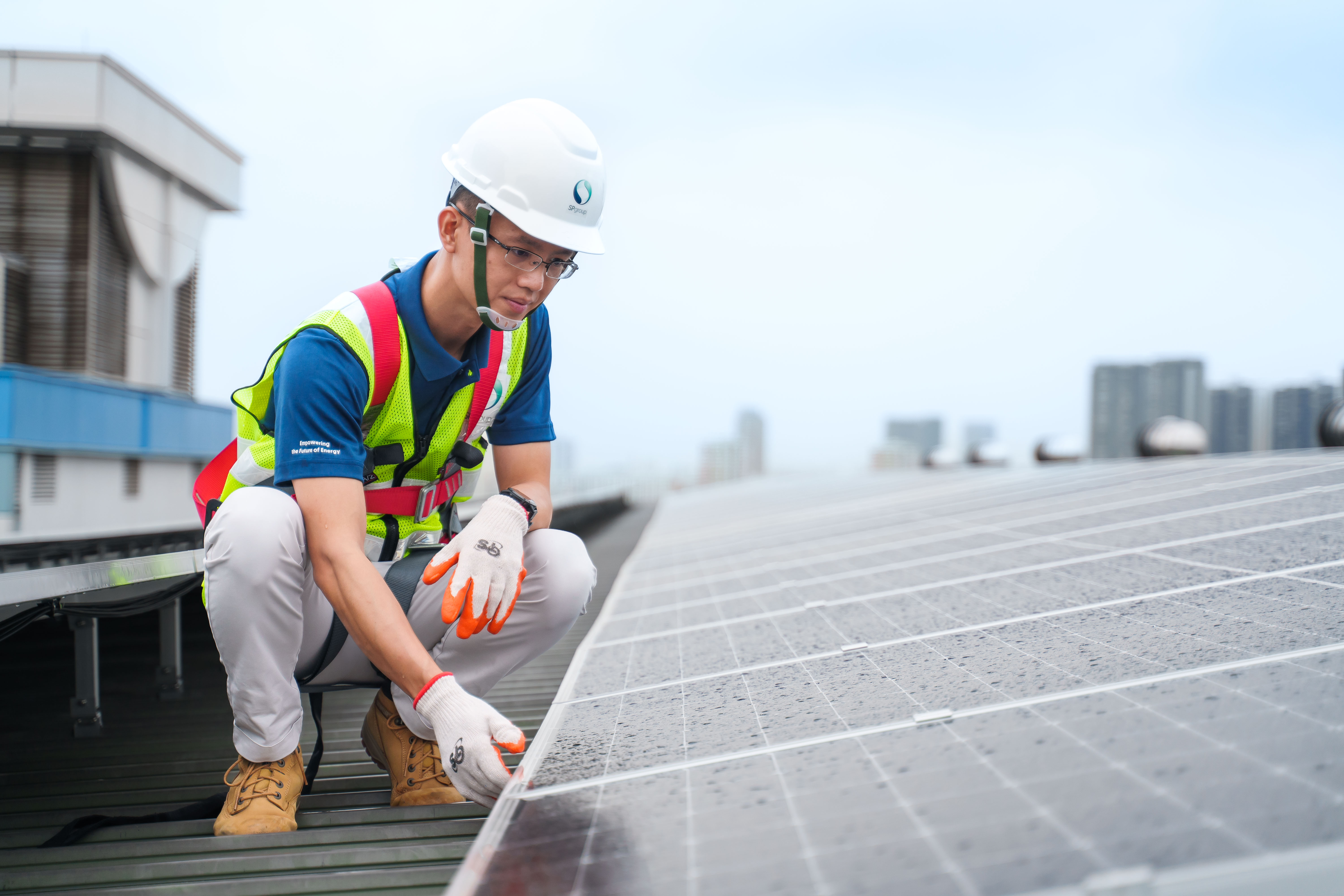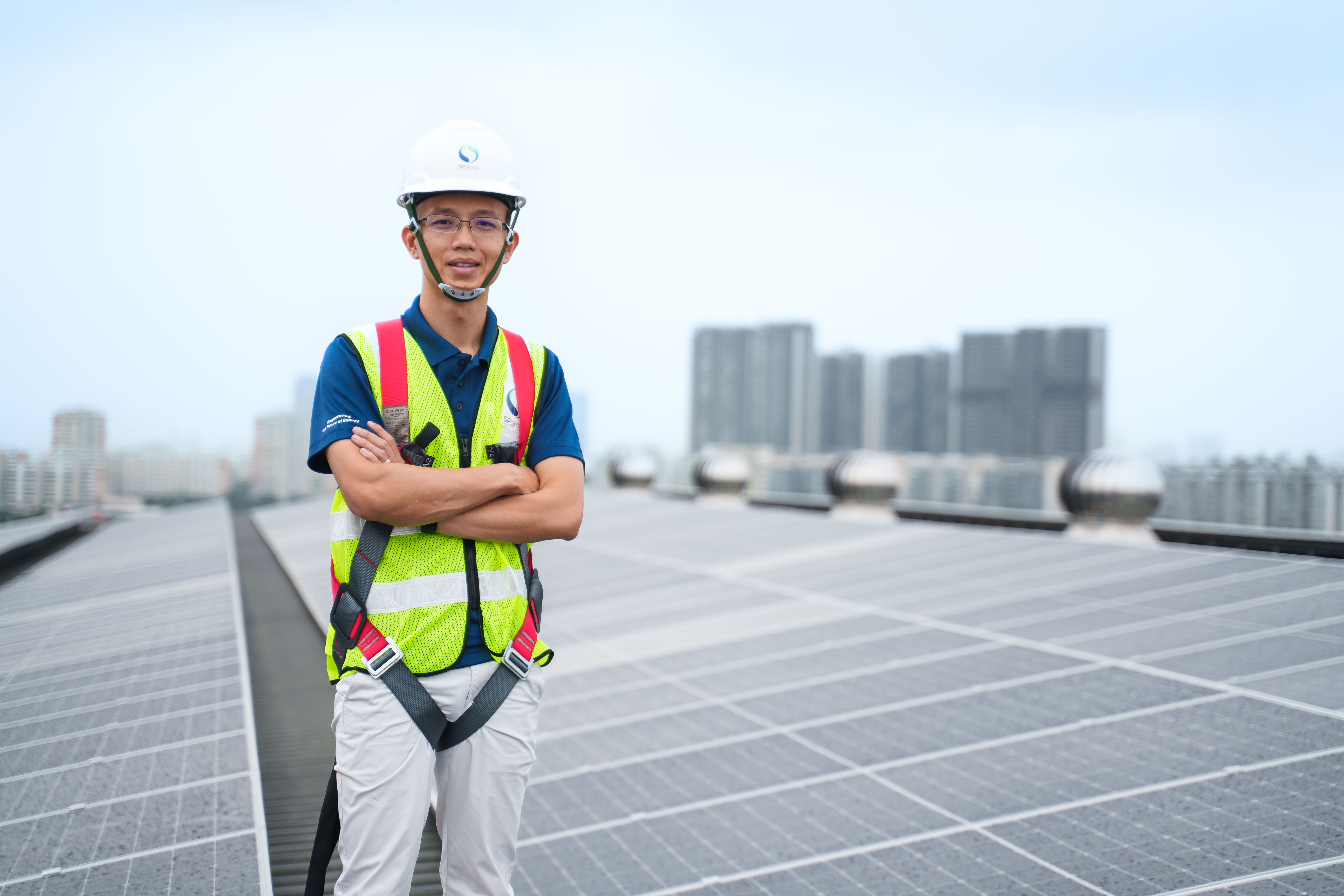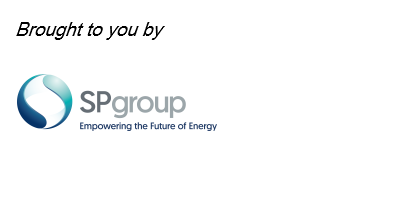BRANDED CONTENT
How this real-life Captain Planet is combating climate change
Principal engineer Xcel Lai and his colleagues at SP Group (SP) are helping the nation achieve decarbonisation one solar panel at a time

Part of principal engineer Xcel Lai’s job is to identify and optimise underutilised spaces so that solar panels can be deployed to generate renewable energy.
PHOTO: SP GROUP
Follow topic:
While great strides have been made to advance the adoption of solar energy, there is still tremendous work to be done and hurdles to overcome.
To tackle climate change and decarbonise the power sector, Mr Xcel Lai, a principal engineer at SP Group (SP) and a member of the company’s Sustainable Energy Solutions team, works with commercial and industrial customers to maximise solar deployment on their properties by identifying and tapping underutilised spaces to generate sustainable, renewable energy for business needs.
Mr Lai’s latest project involves installing rooftop solar panels on 37 electrical substations across Singapore, which will generate low-carbon energy of 15.7 megawatt-peak (MWp) annually – enough to power more than 4,500 four-room HDB flats a year. This is one of SP’s latest green initiatives to optimise substations with low-carbon capabilities and contribute towards national sustainability targets.
“Green energy is transformational and central to the future of energy. My job is to figure out how to safely and optimally shift our energy supply from our traditional energy sources to more sustainable sources,” shares the 33-year-old.
A substation is a part of the power grid infrastructure which enables energy transmission and converts high voltage to low voltage for the end-user. For Mr Lai, the project to “green” the 37 substations exemplifies what it takes for Singapore to progress in her energy journey.
The solar panels are slated to be installed on all 37 substations by 2025.
This in turn will contribute to Singapore’s ambition to achieve net-zero carbon emissions by 2050. The Energy Market Authority aims to install at least two gigawatt-peak of solar deployment by 2030, equivalent to the annual electrical needs of 350,000 households.
Engineering the urban solar roofscape
The concept of harvesting the sun’s energy from Singapore’s rooftops sounds straightforward. However, it is not just a matter of mounting solar panels on any available space. In land-scarce Singapore, rooftops may not always be designed to house solar panels.
Typically, a project to install solar panels starts with a site feasibility study. Mr Lai visits the site to assess and plan how to install the photovoltaic system which transforms sunlight into electrical energy.
“I get to access the usually-hidden service and logistics areas, which can look surprisingly different from what the public sees,” he says.
“There are many considerations during a site survey – from the irradiance and shading which is affected by the surrounding buildings and the sun’s angle, to the type and weight-bearing ability of the roof surface. We also need to ensure that the installation conforms to the Singapore Civil Defence Force’s fire safety regulations,” Mr Lai adds.
The space also has to be large enough for an efficiently scaled operation. These technical challenges aside, Mr Lai is excited about the prospect of overcoming these constraints to unlock the viability of solar energy at scale.
“Carbon neutrality is an achievable goal and Singapore is moving decisively towards this. It is only a question of how fast we are able to transition. This is where my colleagues and I at SP have a chance at making a meaningful contribution to our industry and the planet. While the path to net-zero is an uphill task, we hope to be part of the solution that reduces the pollution, metaphorically speaking.”
Sustainability has become a priority for many companies today. Mr Lai and his colleagues from the SP's energy services unit are identifying solutions that would help businesses embed sustainability practices into their operations to accelerate their decarbonisation efforts. These include solar photovoltaic systems, microgrids and battery energy storage systems.

Investing in reliable energy generation
As a country with limited natural resources, solar energy holds a lot of promise as a source of sustainable energy for Singapore.
“Singapore has an abundance of solar energy. Solar energy is clean and has the potential to be integrated into our infrastructure,” says Mr Lai. “It’s our best bet as a green energy solution.”
What happens when it rains and gets cloudy?
“We can “collect” energy in an energy storage system when the sun is out, and use the stored energy after the sun sets, or during cloudy, rainy days.”
SP is supporting the growth of the Energy Storage System (ESS) capacity to manage intermittency from solar energy. Such a system provides quick response when solar installations are affected by cloud cover, making it a reliable source of power.
In the future, with more mature battery technology in ESS, solar energy will prove to be even more viable and reliable.
Towards a climate-friendly future
The sector is going through a massive transformation and it is not enough just to react to the changes. This is why SP is continuing to scale up on solutions that support the Singapore Green Plan 2030.
“We are picking up the pace to meet our energy goals. It’s only a matter of time that we will deploy solar panels over most surfaces that are suitable in Singapore,” says Mr Lai.
Recently, SP partnered with AIMS APAC REIT (AA REIT) to install photovoltaic systems on six of AA REIT’s industrial, logistics and warehouse properties. This will be one of the largest rooftop solar installations by any Singapore-listed real estate investment trusts. The panels can collectively produce 14,500 Megawatt-hours of renewable energy and avoid over 5,900 tonnes of carbon emissions a year, which is equivalent to taking almost 6,490 cars off the road.
Besides solar energy generation, SP is also paving other critical pathways to achieve net-zero carbon emissions, including electric vehicle (EV) charging, centralised district cooling and smart metering.
SP has also exported these solutions to overseas markets, including China, Thailand and Vietnam to help countries meet climate goals.


